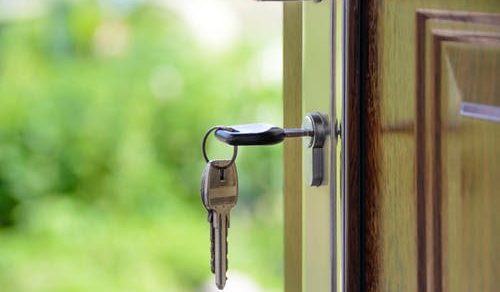How Restoration Services Prioritize Tasks During the Initial Stages of Cleanup
Dealing with property damage can be overwhelming, and knowing where to start with restoration is key. Restoration companies usually follow a strategic process to make cleanup both effective and efficient.
Evaluating the Situation
Before proceeding with any tasks, the first step is to thoroughly assess the damage. This involves an on-site visit where professionals can evaluate the extent of the damage and determine what kind of restoration is needed. The goal is to gather as much information as possible so that a strategic plan can be devised.
Key Elements of Assessment
-
Type of Damage: Whether it’s water, fire, mold, or storm damage, identifying the type is crucial for setting priorities.
-
The extent of Damage: Understanding how widespread the damage is within the property helps in planning the required labor and resources.
-
Safety Hazards: Detecting any immediate threats like structural instabilities or exposed electrical wiring is critical to ensure safety.
Setting Priorities Based on Safety and Damage Mitigation
The primary concern is always safety. Any risks need to be addressed promptly. Once safety is assured, attention turns to preventing further damage. This might include boarding up windows, tarping roofs, or shutting off water supplies. Immediate action can minimize further damage and reduce overall restoration costs.
Steps Involved in Risk Mitigation
-
Securing the Premises: Ensuring there are no unauthorized entries and addressing safety hazards.
-
Stopping Further Damage: Quick actions, such as using dehumidifiers to prevent mold growth, can stop the spread of damage.
Addressing property damage in Springfield often requires these urgent actions to ensure no further losses occur.
Organizing Resources and Mobilizing Equipment
Once the priorities are set, it’s time to organize the necessary resources. This includes both human resources and specialized equipment. The foreman or manager coordinates manpower based on the skill sets required for each task. Equipment like industrial vacuums, dehumidifiers, and air purifiers needs to be transported to the site.
Efficient Resource Management
-
Team Allocation: Assigning specific tasks to team members according to their expertise ensures efficiency.
-
Equipment Deployment: Ensuring all necessary equipment is on-site, functional, and utilized properly.
Implementing Initial Cleanup Operations
With resources in place, the initial cleanup operations begin. This often includes tasks that stop further damage and prepare the site for more intensive restoration efforts. Water extraction, debris removal, and initial cleaning of affected areas are typical activities at this stage.
Phases of Initial Cleanup
-
Water Extraction: Minimizing water damage by removing standing water is crucial in the early stages.
-
Debris Clearing: Removing loose debris or items beyond repair helps in clearing space for further restoration work.
Efforts like water damage repair are foundational as they address some of the most common and pervasive types of damage.
Effective Communication with Clients
An essential part of the restoration process is effectively communicating with property owners. Keeping clients informed about progress, challenges, and changes in plans is crucial for transparency and trust-building. Restoration companies often provide clients with regular updates, explaining the ongoing steps and future plans.
Why Communication Matters
-
Client Peace of Mind: Knowing what’s happening can alleviate some stress for property owners.
-
Adaptability: Clients can make informed decisions if changes are required during the restoration process.
Collaboration Among Teams
Restoration often involves multiple teams working in tandem. This could be internal teams or external collaborators like electricians or plumbers. It’s crucial that these teams communicate effectively to avoid any tasks falling through the gaps.
Benefits of Team Collaboration
-
Streamlined Processes: Coordinated efforts reduce time wastage and improve efficiency.
-
Innovation and Problem Solving: Sharing expertise across teams can lead to more effective solutions.
Mold and Structural Concerns
In the aftermath of water damage, mold can become a serious issue if not addressed promptly. Mold removal and structural assessments typically follow the initial cleanup. Specialists look for signs of mold development and evaluate the structural integrity of the property, addressing any concerns as they arise.
Tackling Mold and Structural Issues
-
Mold Removal: This often requires specialized treatments to ensure complete eradication.
-
Structural Evaluations: Experts check that the building is safe and stable, which might involve consultations with engineers.
Documentation and Reporting
A crucial yet often overlooked step is documentation. Proper records of the damage and restoration process are essential for insurance purposes. This can involve taking pictures, noting the extent of damage, and detailing the steps taken during each phase of restoration.
Elements of Effective Documentation
-
Visual Records: Taking photos before, during, and after restoration helps in validating the work done.
-
Written Reports: Detailed reports that list steps taken and materials used are critical for insurance claims.
Processes for dealing with scenarios like the benefit from this detailed documentation as it helps both clients and insurance companies understand the work carried out.
Final Assessment and Client Walkthrough
After the cleanup tasks, a final assessment is conducted to ensure all areas have been addressed according to the plan. A walkthrough with the client is usually done to confirm satisfaction with the work completed. Any remaining concerns can be documented and resolved before closing the project.
Final Steps to Ensure Satisfaction
-
Detailed Inspection: Cross-checking every task against the initial assessment to ensure all has been covered.
-
Client Feedback: Encouraging property owners to share their thoughts and any issues that need addressing.
Final thoughts
Balancing multiple priorities during the initial stages of cleanup is no small feat. However, by following a structured process, restoration services can ensure that each task is handled efficiently and effectively. This not only reduces downtime for property owners but also sets the groundwork for successful restoration and rebuilding. The next time you’re faced with the daunting task of dealing with any kind of property damage, you’ll know there’s a method to the madness, and professionals have your back, ready to restore both your property and peace of mind.




